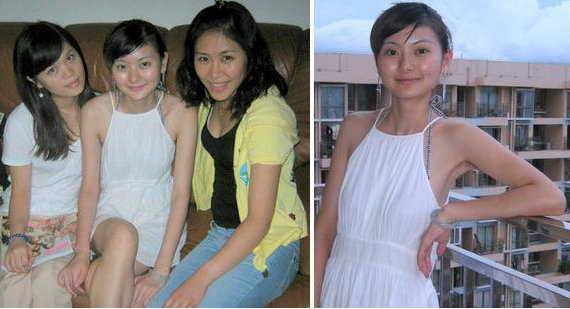
SHENZHEN IS China's most crowded metropolis.
And depending on who you ask, it also boasts the highest per capita incomes.
The result -- an upwardly mobile and motivated migrant work force and middle class masses struggle to find their home away from home without breaking their respective banks.
NextInsight brings you an up-to-date survey of Shenzhen's rental property market.
Among China's Tier I cities, Shenzhen is the poster child for rental rate instability and also sets the benchmark for bubble bursting building bonanzas.
In fact, each time the regular litany of legislation targeting developers comes down from Beijing, it might as well have an addendum stating: "Are you listening, Shenzhen?"

And Shanghai is China’s de facto financial capital, with the country’s biggest stock market and more foreign firms having a brick and mortar foothold there than anywhere else – not to mention also having more urban denizens than our Shenzhen.
But Shenzhen is a critical cog in the Chinese economic juggernaut.
Firstly, Shenzhen is, by some measures, China’s third most populous city and its most densely populated metropolis.
Secondly, it has the country’s second biggest stock market.
Thirdly, it is located in Guangdong Province, the country’s most affluent, responsible for a whopping 25% of all of China’s exports.
Add to that the fact that Shenzhen’s container thoughput rose nearly a quarter last year to 22.51 mln TEUs, ranking it the world’s fourth busiest port, according to Shenzhen’s Transport Commission – and No.2 in China to rival Shanghai.
Finally, we can’t forget that Shenzhen was the birthplace of China’s modern economic miracle, serving as the first Special Economic Zone (SEZ) way back in 1980 when then leader Deng Xiaoping allowed free market principles and private enterprise activity to run the show for the first time.
We all know the result.
“Shenzhens” mushroomed up all over the country and one could say that now China is one unified SEZ, having leapfrogged from No.7 to No.3 in the global GDP ranking game in just a few short years.
Therefore, to know Shenzhen is quite arguably the best way to know modern China, and the economic colossus that it has become.
And what better a place to start than with the property market, because whether we are hauling bricks to a smelter in the city’s industrial outskirts, or have a corner office high up the world’s 14th tallest skyscraper – The Diwang Daxia (loose English translation: Local Emperor Building) – at the end of the day, we all need a place to stay, a place to hang our hat.
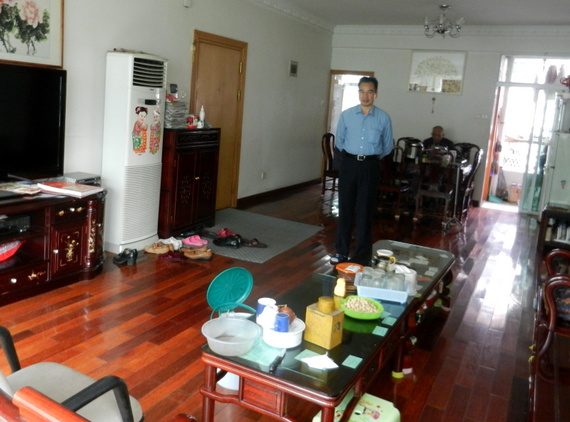
It is not just Mainland Chinese who are paying close attention to the PRC’s property market.
Neighboring Hong Kong has traditionally been the source of Shenzhen’s “foreign investment,” sharing a common culture and language with the city.
Hong Kong also vigorously competes with Shenzhen for financial influence (they both have major stock markets), cargo and container shipping as well as housing rental and purchase contracts.
And given the very heavy weighting of the property sector on Hong Kong’s bourse, it is no wonder that the two neighbors pay close attention to housing trends across each other’s de facto borders.
Hong Kong-based newspaper Wen Wei Pao is one of many local media outlets reporting on the sector in Shenzhen, and said recently that sales of used homes in Shenzhen slumped sharply in 2011.
Taking July and August as indicators, the survey said that over 10,000 used homes had changed hands during the two month period, a total that plummeted nearly 80% year-on-year.
The report cited leading developer Centaline Property as saying that over 3,000 property agencies had gone out of business in Shenzhen in the first half of 2011.
Additionally, HKP Estate Agency reportedly has slowed down the speed at which it opens new offices, saying that Shenzhen’s property market was “undergoing a real estate bubble burst.”
Ms. Ou: Squeeze of a home at 30 sq m, 300 yuan monthly rent
24-year old Ms. Ou feels right at home in Shenzhen, having actually been born and raised here. For anyone who has spent any time in this city, finding someone who can trace their roots all the way back to the local maternity ward is a true rarity as Shenzhen is predominantly populated by migrant workers from disparate parts of the Middle Kingdom, and migrant workers like myself from outside the Middle Kingdom.

Ms. Ou is an unassuming trade school graduate who in many ways typifies the emergence and rise of a middle class across the country. Having started as a part-time fill-in worker on a garment factory line five years ago, she worked her way up to an entry-level bookkeeping position in the firm’s shipping department.
Her one-room apartment is much smaller than many of us would ever imagine ourselves being very comfortable in with a total area of just 30 square meters.
But perhaps typical of upwardly mobile and ambitious Shenzheners, Ms. Ou is very pleased to have her own place, and with monthly rent at just 300 yuan (i.e. a little over 10% of her paycheck), she says she is pleased that she can both live independently and also put away such a high percentage of her take-home pay.
This was the lowest rental rate I had encountered in the survey or in any advertisement.
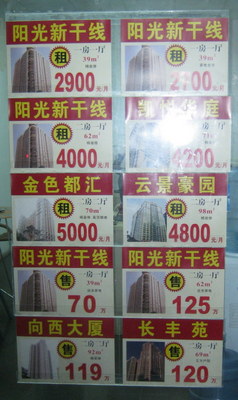
Photo: Andrew Vanburen
But her can-do spirit and sense of optimism, mixed with an epic level of pragmatism, for me summed up the heart and soul of Shenzhen – especially her reply to a question about where she got her beauty sleep each night.
“Yes, I know it probably looks small, but I save a lot of space by not having a bed and sleeping on this couch,” she said, pointing to a well-worn orange divan.
Ms. Li: Penthouse living does have its low points
Jing Li is used to getting attention.
The 22-year old calls a small town in Hubei her hometown, but since 2008 she has been running to and from various photo shoots and modeling jobs in Shenzhen.
She openly says that she is not “in love” with her job, adding that the money and flex-time working schedule are the chief two attractions holding her to a job catering to the attractive.
“I really don’t work that often, but when I do I do quite well. In fact, sometimes I go days without having a shoot. In retrospect, I probably would have gone through an agent, but I decided to go freelance. You know, agencies take most of our money, so that was a big turnoff,” Ms. Li said.
She added that the best part of the job (other than the money) was the free time it afforded her.
Never one to stand still, the rather jumpy young model read off in an animated fashion a list of the things she can do with her irregular paychecks.
“I have the time and money to pursue things like dance classes, Japanese, English and I might see if I can get in a drawing or graphic design class,” she said.
She said the most annoying thing was when she is on her way to a class and the phone rings asking for her presence at a photo shoot.
“Those episodes sometimes make me want to get a regular job. But then again, when would I have time to study?”
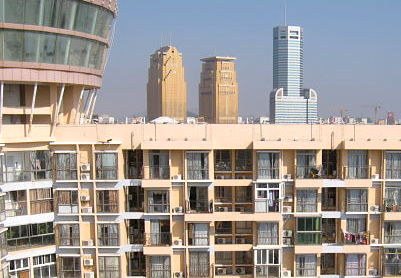
Photo: Andrew Vanburen
The 95-square meter, two bedroom, one kitchen/bath flat sets her back 3,000 yuan per month, but she said the landlord was probably doing most of the laughing come rent time.
“Not only does he demand six-month contracts, but whenever I complain, he calmly tells me know where I can find replacement parts and who to call for labor, then he just as politely hangs up. In the two years I’ve been here, he has only paid for one repair – a replacement refrigerator, but used! I guess he doesn’t want his paying clients starving to death afterall!”
But she was grateful that the rent hadn't risen since she's been there.
Her sense of humor was a way of concealing her frustration at the deteriorating state of the apartment.
Ms. Li added that she did derive some guilty comfort from knowing that nearly all of her peers in Shenzhen had similar complaints about the rather unscrupulous landlord culture in the city.
“I can’t leave too many doors open because once there is a crossbreeze in here, doors suddenly slam shut with great violence, causing the kitchen door to fall right off its frame and leaving lots of plaster bits to sweep up often. The shower head fell off, the water heater is broken, three kitchen cabinet doors rotted off their hinges and I don’t usually allow guests into my kitchen,” she said.
When asked why not, she said it had nothing to do with her cleanliness, as she says she swept up and mopped nearly every day, but had everything to do with other uninvited guests.
“It's the roaches,” she said.
Mr. Huang: Renting until buying becomes a bargain
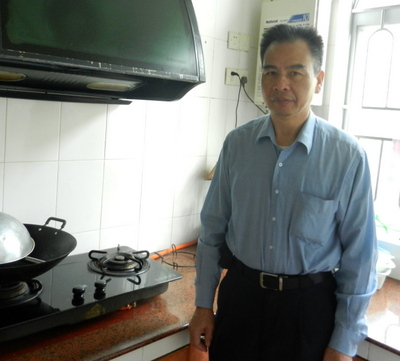
He moved here in 2008, just prior to the financial meltdown, and has been waiting in the wings for "property buying prices to bottom out" before he makes the leap from a rental apartment to a home, he said.
The 50-something has a rather spacious 125 square meter two bedroom/two bath apartment in the upscale Nanshan District, but says that the monthly rent is a relatively affordable 2,900 yuan because of the aging and somewhat outdated nature of the complex in which he lives with his wife.
Like Ms. Li above, he also reports that his rent has not risen over the past three-plus years.
And any casual observer of the property sector will tell you that, with a few exceptions, rental and buying prices in the real estate sector usually show similar trends.
At this rate, it seems that Mr. Huang will not have long to wait before finding a bargain property to call his own.
For our purposes, it is best to simplify Shenzhen into four distinctly different districts: Luohu, Futian, Nanshan and Baoshan.
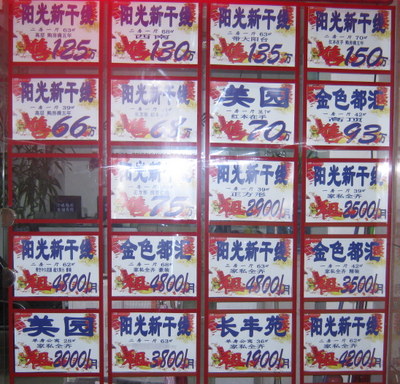
* Futian is decidedly newer and more sparkling than its neighboring district, being dominated by the city’s financial hub, a series of wide perpendicular streets and most of the metropolis’ luxury five-star hotels.
* Nanshan, while still having a healthy mix of the haves and the nearly-haves, is perhaps the most coveted living location for the well heeled, with a long stretch of meandering coastline offering breathtakingly beautiful but bank-breaking vistas of the South China Sea.
* Finally, Baoshan – the biggest of these four featured districts – is also the most blue-collar of the bunch, being surrounded by factories and their surrounding wall of worker dormitories, low-rent housing developments, and the city’s international airport.
See also:
SINGAPORE'S CAR COSTS Driving You Crazy? See How Shenzhen Fares
Counting the costs of living in SHENZHEN
